The Mammoth (Mammuthus)
Almost a mythological animal, the mammoth came into the common imaginary. He always amazes the many generations of schoolchildren who décoversur their books with a kind of hairy elephant, armed with gigantic tusks, surrounded by prehistoric men with stakes. If this image certainly has little to do with reality, it is not less that the mammoth had to be, in prehistoric times, a subject of astonishment and fright for our ancestors. It was then the largest terrestrial mammal.
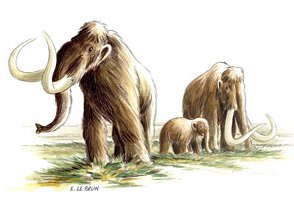
The first mammoth fossil remnants found from ancient times were attributed to giant and monstrous men. The research later indicated that the bones had to belong to elephants.
It is Georges Cuvier, in 1796 (research on fossil bones), which will show by comparison between the bones that they belong to another species. But it was only in 1799 that Brumenbach gave him the scientific name of Elephas Primigerius.
Several species of mammoths
A herbivorous mammal, the mammoth belongs to the Elephant Family, the Proboscids group. If one finds the origins of this group at Cenozoic 55 million years ago, the first mammoths appear 4 to 5 million years ago. Their evolution is diversified into 11 distinct species: Mammuthus africanavus, Mammuthus Columbi, Mammuthus exiles, Mammuthus Gromovi, Mammuthu intermedius, Mammuthus meridionalis, Mammuthus Primigenius, Mammuthu Rumanus, Mammuthus subplanifrons, Mammuthu Sungari, Mammuthus trongontherii. The last mammoth species is attested to the north of Siberia around 1 700 years BC.
To note, the mammoths are not the ancestors of the elephants, the two species nevertheless have common ancestors.
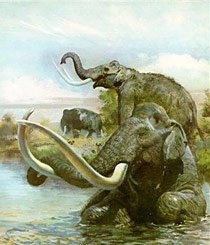
The disappearance of the mammoths:
The different species of mammoths began to disappear 12 000 years ago in Europe. If, apparently, survival pockets in North America and Siberia remained, the last mammoths were found on the island of Wrangel (Siberia). These survivors were dated from-3700 years BP.To explain this extinction two hypotheses are envisaged: the intensive hunting by the human species or the softening of the climate. The two reasons may have accumulated.
Geographical distribution
Native to Africa the mammoth species then spread to the European continent (between-2 and-3 million years), then North America (-1.5 million years), probably through the Bering Strait.
Characteristics of the animal
The mammoths measured between 3 and 5 metres at the tourniquet and averaged 4 to 6 tonnes depending on the species. The most imposing mammoth was Mammuthus Sungari, whose weight was between 6 and 8 tons. The female was much smaller than the male.
His "proboscis" allowed him to smell, breathe, suck and spray. This true articulated arm was also used as a tool or instrument of communication "1."
To protect from the cold the mammoth had 3 specific layers: a thickness of 8 to 9 cm of fat, a layer of skin of 2 cm and, finally, long hairs that covered his body. Every year, during the warmer periods, the mammoth lost its hair which then grew back for the winter.
The tusks of the animal, one of its distinctive traits, were strongly recurved and almost curled. They could reach a length of 4 to 5 meters. The tusks allowed the animal to dig up grasses or to search the snow in the winter to make the vegetation appear thin.
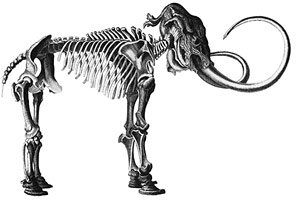
Relationship between the mammoth and the man
In the Ice Age the search for food had to be a perpetual quest for men. The mammoth, weighing several tons, was not to be easy to stalk and even less to kill. To immobilize these animals, Homo sapiens or Neanderthal could trap it in huge pits (but hard to dig because of a frozen ground) or push it towards swamps or steep places. Once the animal was stuck they probably had to finish the animal with spears.
If we can imagine that our ancestors were chasing, with difficulty, the mammoth, the charognage had to be the main way to recover these huge masses of meat.
Once dead (or more rarely slaughtered) the mammoth was a real boon for prehistoric men: apart from meat, the animal gave access to an extraordinary amount of fat, skins, marrow, hair and bone. Everything was good to
The mammoth in prehistoric art
Less frequent than the reindeer or the horse the mammoth is nevertheless well represented in many French caves. Small tower in the ornate caves where one or more mammoths appear (the Cave of Rouffignac has the peculiarity of presenting more than 120 mammoths on its walls).
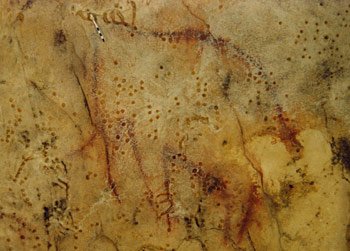

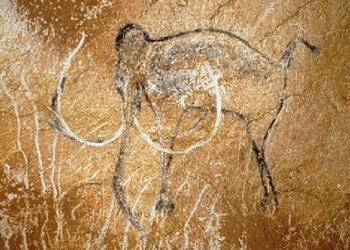
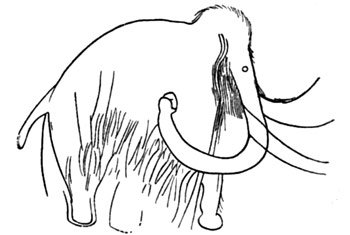
The mammoth as building element
In Ukraine, the remains of several "prehistoric huts" were discovered by a pile of tusks and mammoth bones. On the site of Méziric the remains of 4 huts have been updated. The structures were built with skeletons of 150 mammoths at a minimum. On the site of Gontsy, also in Ukraine, 5 prehistoric huts built with bones have been discovered.
below cons The reconstitution of one of these huts to Méziric using the tusks but also many parts of the skeleton of the mammoth (Scapulas, skulls ...)
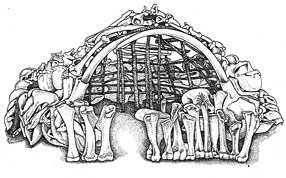
Congratulations @oulsalim! You have completed some achievement on Steemit and have been rewarded with new badge(s) :
Click on any badge to view your own Board of Honor on SteemitBoard.
For more information about SteemitBoard, click here
If you no longer want to receive notifications, reply to this comment with the word
STOP